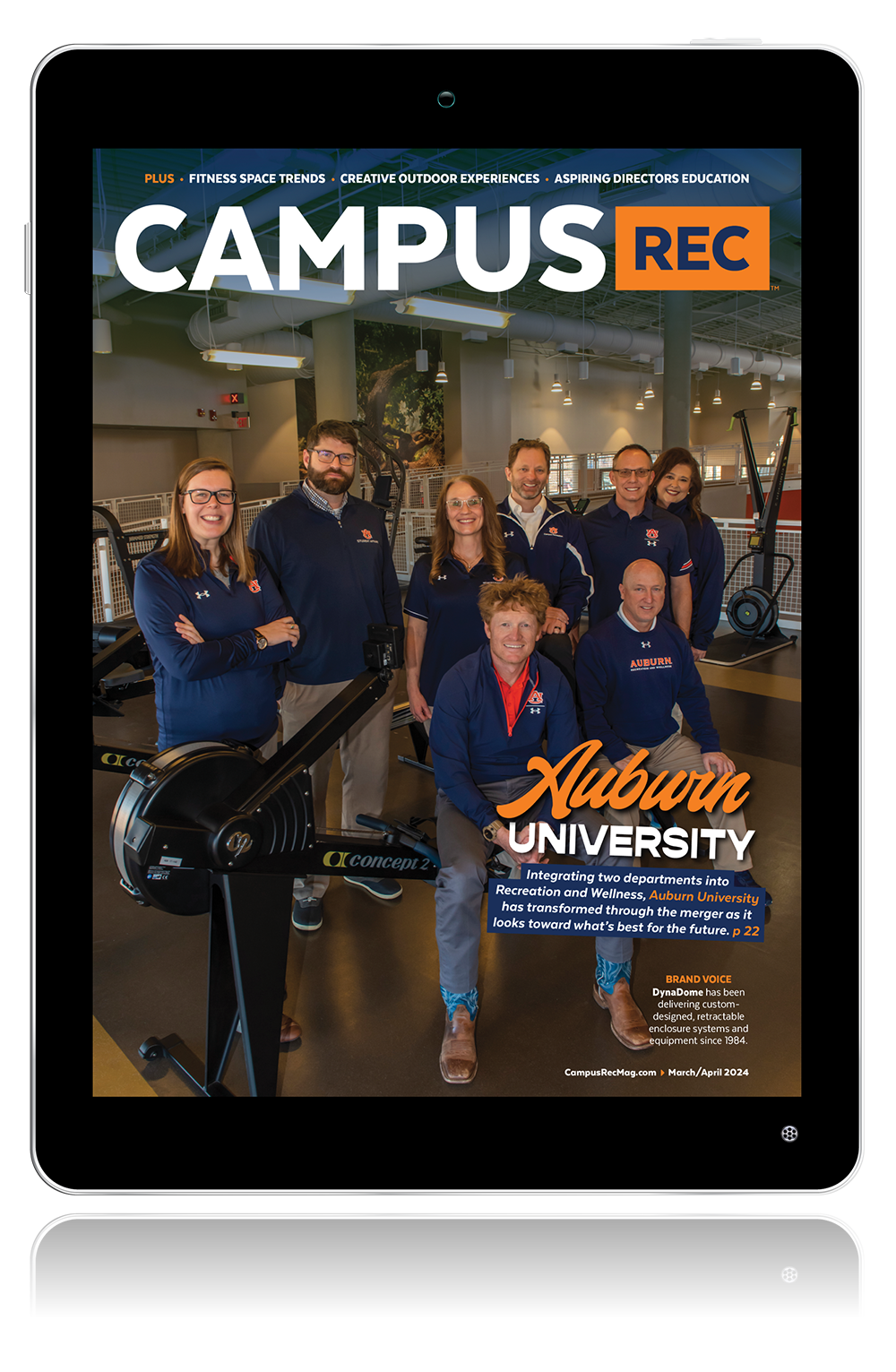
As of Friday, April 17, 2020, COVID-19, colloquially known as coronavirus, has infected over 2.3 million worldwide, claiming the lives of 150,000. The epidemic has unrelentingly ravaged healthcare infrastructures of regions and engulfs the resources of entire countries as it decimates the global economy.
Every corner of our world has been affected in some capacity. Businesses, large and small, have shuddered due to economic activity being slowed to a trickle. Entire industries have wilted or have been temporarily repurposed and mobilized to support containment and relief efforts.
The coronavirus epidemic will indelibly impact our lives personally and professionally, forever reshaping the landscape that comprised our industry and livelihood.
By no means is the list of anticipated impacts below exhaustive, nor does it serve as a crystal ball of what the future of our field holds, but rather it’s a contemplative amalgamation of considerations for seasoned and nascent recreation professionals alike. Nevertheless, trepidations about the changed landscape of our profession — and ostensibly our work environment and possibly redefined roles — should take a backseat to our commitment of unwaveringly providing the communities we serve with exemplary service.
1. Greater reliance on remote work and service delivery arrangements.
The majority of us thrive on entering the building each day, interacting with fellow community members, mentoring and leading our staff, while maintaining a physical boots-on-the-ground pulse of our facility and department.
In the immediate future, or at least until sequestration guidelines can be safely relaxed, it is imperative that communication be prioritized via emails, calls and synchronous teleconferences, daily or weekly as appropriate.
Agendas should reflect long range strategic planning. Additionally, meetings should include dissemination of evolving COVID-19 information from vetted and/or trusted sources, such as the Centers for Disease Control and Prevention, as well as state or provincial, county, and municipal government and respective public health agencies, if applicable. Discussions concerning updates should be kept brief, relating only to department employees, members of the campus community, and/or operations of the physical campus, including recreational facilities, if impacted.
Each meeting should include an ice-breaker or anecdote that is positive and uplifting as well as sharing recipes, home workouts, and tips on how to balance the scale of work and life that is both precious and perilously divided.
Depending on the size of your department and capabilities of the conferencing platform, work study employees and graduate assistants should be included as to maintain both a sense of belonging and sense of purpose. Ideas and insights should be culled from them and senior staffers should serve as a pillar of guidance during this time. They too can be given work to be completed remotely, such as reviewing policies and procedures manuals; performing research on emergency action planning; or conceptualizing and assembling programming that can be delivered electronically, whether synchronously or asynchronously, such as remote personal training or group exercise sessions, or hybridized, involving intermittent or occasional in-person sessions and attendance. Student staffers, part-time employees and independent contractors, if applicable, should be apprised of updates concerning the department and be provided opportunities to communicate and engage with professional staffers.
As it pertains to service delivery — particularly personal training and other fitness services — for the past decade, countless fitness professionals, including those viewed as industry leaders, have trained and consulted clients remotely. Perhaps this can serve as an option for departments, especially if their university is technologically and logistically capable of supporting these mediums.
Nowadays, virtual group exercise offerings are commonplace, though departments could still catalog resources for community members and provide them attendant login credentials to perform sessions in the comfort of their own dorm or apartment, or off-site within a small group of fellow students or coworkers.
Other departmental functions such as wellness consultations and nutrition support meetings can be carried out remotely.
The traditionalistic fixed mindset of needing to be in the building to serve campus communities needs to evolve into one that is open to utilizing technology to optimize efficiency while upholding safety via social distancing for the foreseeable future.
2. The continued proliferation of esports and its rise to prominence.
By 2023, the esports industry is expected to scale to $7 billion. Per recent survey statistics, 70% of people between the ages of 13 and 64 engage in some sort of electronic gaming. Esports have emerged on campuses throughout the world and within the U.S. Some programs are now housed by recreation departments and recognized as club sports. Since participation is not predicated by physical location, this segment will continue to grow, and involvement can be pitched to online and commuter students, since their circumstances likely prevent them from being on campus very long, if at all.
3. Enactment and enforcement of density control measures.
Physical space is locked in a three-way tie with money and time as the most coveted resource among recreation administrators. Each academic year, recreation staffers find themselves trapped in a perpetual game of Tetris. Taking the place of asymmetrically shaped clusters of blocks are cumbersome pieces of equipment that are often finagled or outright abutted into other pieces to make room for newly arriving equipment or to temporarily accommodate a gathering or event in spite of being keenly aware that cramped and oft-crowded fitness floors, unfortunately, are bazaar for pathogen exchange.
The American College of Sports Medicine recommends no less than 30 inches sit between adjacent pieces of equipment. The National Strength and Conditioning Association recommends a distance of 36 inches be maintained between the end of the sleeve of the barbell and another piece of equipment as to permit safe egress.
Furthermore, the American Society for Testing Materials recommends a clearance of two meters behind each treadmill and a separation of 0.5 meters between each treadmill.
Equipment residing next to one another below those recommended ranges poses many dangers, but research shows those ranges may not be sufficient in protecting against aerosolized pathogen transmission. Respiratory particles expelled from the lungs and airway are capable of traveling up to eight meters, if expelled forcefully via a cough or sneeze. The particles can remain suspended in the air for extended periods of time. Fallen droplets contain shredded virus and coat surfaces that lie beneath.
As a means to instill confidence within incoming and returning community members once sequestration edicts are lifted, individual pieces of equipment, particularly duplicate pieces, can be temporarily disabled or cordoned off initially. Some pieces could also be moved, removed, or arranged in pods or groups of different pieces of equipment as to prevent crowding and congregating — i.e. embedding a power rack or flat bench press and/or weight tree in an area consisting of lesser used pieces of strength or cardiovascular equipment.
Density control measures can also be incorporated among structured sports. Small-sided games involving fewer participants — i.e. full court three-on-three basketball versus traditional five-on-five matchups — and more vis-à-vis competitions — i.e. skill challenges, time trials — within traditional sport settings can be encouraged. Temporarily reducing the number of participants within club sport practice or players within competition can be considered, provided it does not present collateral safety risks. Spectators and the number of staffers can also be limited during each team’s respective practice and competitions. If games are commonly attended, live streaming options should be considered.
4. Greater focus on facility cleanliness and hand hygiene.
Every member of the department can do their part in keeping the facility clean. Routine cleaning can transpire among professional staffers, and/or as a facility or “club” pride measure as every available staffer sweeps through the floors, sanitizing surfaces and upholstery. Stanchions and/or equipment and wall-mounted disinfectant spray should be in close proximity to equipment and should be replenished regularly. Community members should be encouraged, even incentivized, to use them. Similarly, hands-free motion detecting hand sanitizer kiosks should be located in higher traffic areas such as doorways, stairwell and entrances.
Reference
Yan, J., Grantham, M. Pantelic, J., Bueno de Mesquita, J., Albert, B., Liu, F., Ehrman, S., Milton, D. (2018). Infectious virus in exhaled breath of symptomatic seasonal influenza cases from a college community. Proceedings of the National Academy of Sciences of the United States of America, 115 (5), 1081-1086.










